Creating Global Solutions – One Community Weekly Progress Update #40
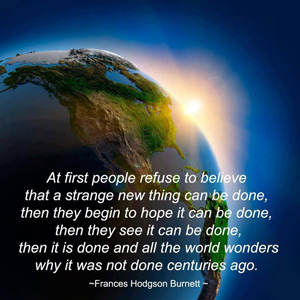 One Community feels that creating global solutions through philanthropy and humanitarianism for purely altruistic reasons isn’t working sufficiently. Our approach to addressing this is developing and demonstrating a living model that provides specific benefits most people want while simultaneously and comprehensively addressing the most pressing problems humanity is currently struggling with.
One Community feels that creating global solutions through philanthropy and humanitarianism for purely altruistic reasons isn’t working sufficiently. Our approach to addressing this is developing and demonstrating a living model that provides specific benefits most people want while simultaneously and comprehensively addressing the most pressing problems humanity is currently struggling with.
By coupling solutions to these problems with what most people will consider a significantly better way of living, we create a model that pinpoints the very roots of our socio-economic challenges while teaching others how to address these challenges too. In this way, One Community is here to provide the global value and individual value necessary to build the wide-spread mainstream support (including financial involvement) capable of positive and permanent transformation on a global scale. Here is our weekly progress update (#40) covering our development and accomplishments for the week of November 25, 2013.
CLICK IMAGES BELOW FOR OUR MAIN OPEN SOURCE HUBS
Click on each icon to be taken to the corresponding Highest Good hub page.
Creating Global Solutions
One Community Weekly Progress Update #40
Here is the bullet-point list of last week’s design and progress discussed in detail in the video above:
- Creating Global Solutions intro @0:10
- Overview of our accomplishments for the week of November 25, 2013 @6:56
- Education for Life: Lesson Plan #1 – “Time” is done @12:31
- The subject of Math is now 90% done @18:08
- Web infrastructure for all subjects now in place @19:26
- Behind the scenes reformatting of ALL our Open Source portals is now done @20:16
- 30 Food Forest Plants are now complete – here are the other 300+ we’ve finished @21:53
- Beginning work on a global plant information application with Guy Fraser @27:52
- Still working on food infrastructure aquaculture – pricing needed hardware @33:01
- Finished reformatting of the Highest Good society page @9:32
- Also completely updated and rewrote the time allotment projections page @35:18
- Earthbag Village landscaping in 3D is now done! @41:40
- 5D is coming where you can walk around in the Earthbag Village @43:06
- SEGO Duplicable and Sustainable City Center final Dining Dome windows and doors done in 3D @44:14
- Huge outpour of support this last week, thank you! (get involved too!) @45:00
- How you can most help creating global solutions right now @46:06
CLICK HERE IF YOU’D LIKE TO RECEIVE AN EMAIL EACH WEEK WHEN WE RELEASE A NEW UPDATE
YOU CAN ALSO JOIN US THROUGH SOCIAL MEDIA
ONE COMMUNITY WEEKLY UPDATE DETAILS
CREATING GLOBAL EDUCATION SOLUTIONS
The first of hundreds of open source and free-shared education resources is now complete. This lesson plan will serve as the template for all future lesson plans within the Education for Life program.
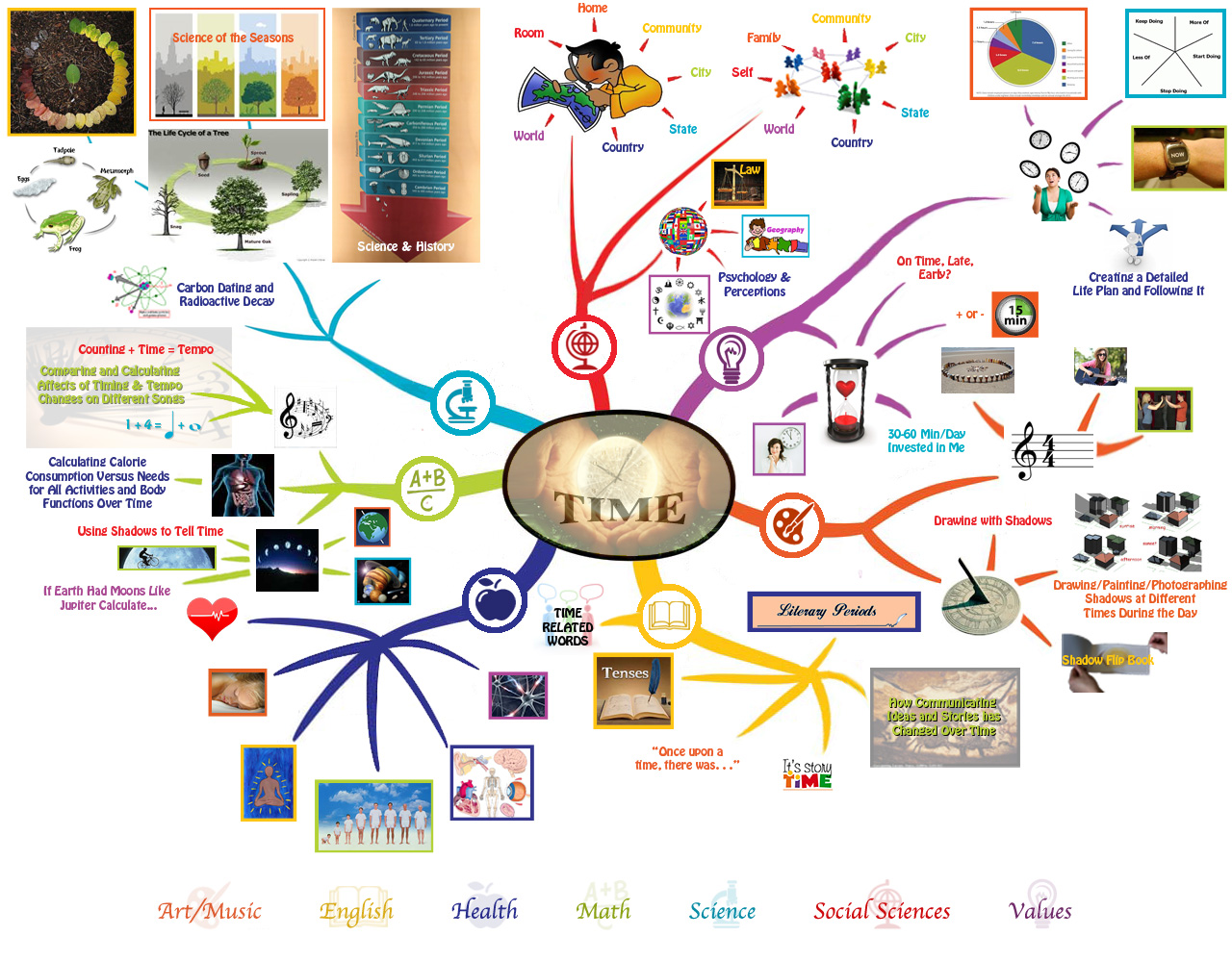
Time Lesson Plan Mindmap – Click to visit the complete lesson plan page where you can enlarge this image
The “Math Molecule” that covers the entire subject of Math is also almost complete. The complete page is being worked on.
CREATING GLOBAL FOOD SOLUTIONS
UPDATE: A PLANT APPLICATION WITH THE DETAIL, OPEN SOURCE, AND COLLABORATIVE INPUT
ABILITY WE DESIRE NOW EXISTS: CLICK HERE FOR THE ENCYCLOPEDIA OF LIFE
One Community has amassed vast amounts of information over the past 3 years, and we’re now looking to create a database that will help structure and manage that information. Guy Fraser, our newest collaborative partner, is helping us organize it with the intent to create an open source and globally-usable and updatable plant and food resource. This in turn will enable us to make our information more freely available and manageable to the mainstream. We may also be able to find a way to integrate this with the ACE Application design and function for seamless data input by all collaborative Highest Good teacher/demonstration hubs.
There are several main categories of information such as food, energy, and housing. Each of these categories is split into a number of topics, for example, “Food” looks a bit like this:
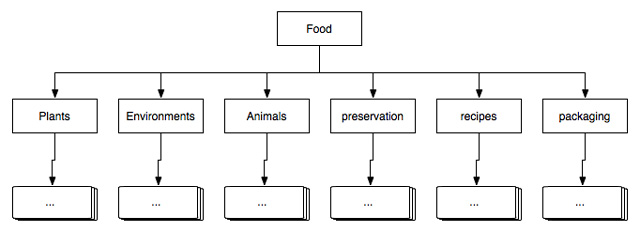
Topics then further split down in to more granular parts, ensuring that information is consistent and easy to access. For example, we have a large amount of information on plants that we’d like to publish:
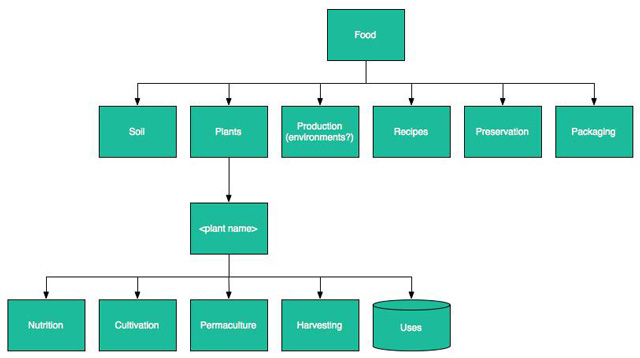
We are currently exploring the options of building software that will allow for global collaboration and contribution beyond what we can manage on the website. For example, we’ve just started investigating the idea of having a “problem solver” for plants that will list common problems, what causes them, and how to fix them. Here’s an example:
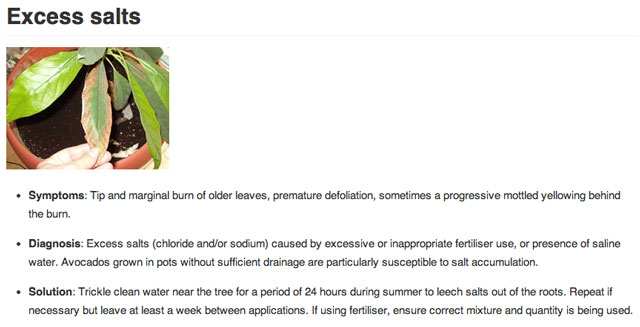
There are decades worth of scientific research into plants that includes existing databases that are currently not organized for mainstream access. These databases include such information as what chemicals they contain, nutritional information, and medicinal uses. While some of this information is available on the internet, vast amounts of it have never seen the light of day because there was no economic benefit to publishing it. So, we’ve now started on a task to gather all of that information and over the coming weeks and months, we’ll be working on ways to get it published to the internet for the very first time!
As we get a better idea of the topology/structure of the information, we’re then able to do some initial mockups of how the database might look. While these mockups are very “old school,” they help us get an idea of what sort of information is required and how it might fit together:
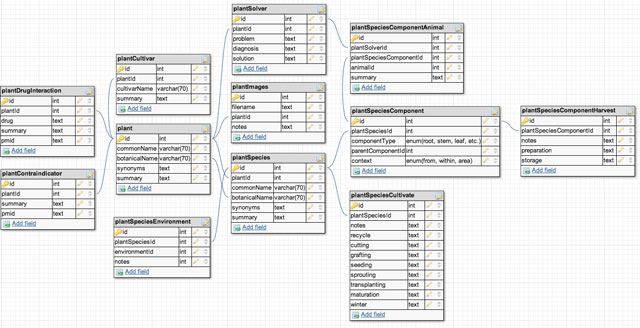
CREATING GLOBAL HOUSING SOLUTIONS
This last week the team also finished the 3D landscaping of the Earthbag Village:
CREATING GLOBAL CITY SOLUTIONS
The SEGO Duplicable and Sustainable City Center is the foundation of our global city solutions. It saves building materials, energy resources, space, food waste, and more. It also helps support a collaborative and cooperative social environment. This last week our team finished the additional 3D placement of windows needed to support maximum passive cooling. We also added the necessary doors to the large-scale laundry facility, and the doors allow easy access and separation between the Social and Dining Domes. Here are screenshots of these new additions:
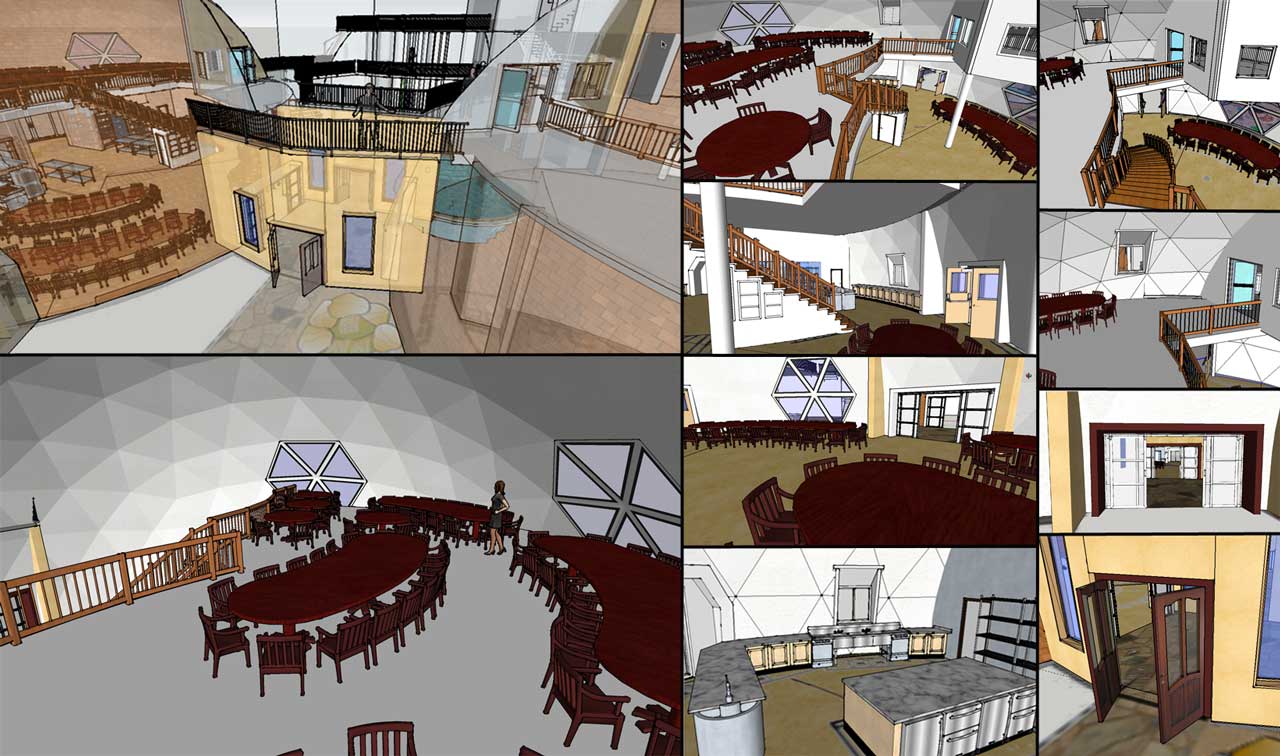
SEGO Center 3D Progress Export for 12-2-2013 – Click to Enlarge
AND WE PRODUCED THIS WEEKLY UPDATES BLOG – CLICK HERE TO SUBSCRIBE
FOLLOW ONE COMMUNITY’S PROGRESS (click icons for our pages)
INVESTOR PAGES
GET INVOLVED
CONSULTANTS ● WAYS ANYONE CAN HELP ● MEMBERSHIP
CLICK HERE FOR ALL PAST UPDATES
WHAT ONE COMMUNITY IS CREATING
One Community is creating global solutions to grow together and change the world together. We are creating global solutions that help each other live in integrity with each other and the planet as we strive to be the greatest versions of ourselves. We do this by harmoniously respecting each other, nature, and the rest of our one shared planet.
Our goal is to demonstrate what we feel is the most sustainable, healthy, and fun environment we can create. Creating global solutions based on compassion, kindness, and collaboration. This replicable community will serve as an example of what is possible.
Throughout our design process of creating global solutions, we are open sourcing and free-sharing everything needed for construction and replication. This includes what we call “Highest Good” approaches to food, energy, housing, education, for-profit and non-profit economics design, social architecture, fulfilled living, stewardship practices, and more. We are creating these resources for implementation as individual components or complete developments called teacher/demonstration hubs. These hubs will help launch additional hubs as awareness and knowledge grow.
BUILDING THE FIRST OF MANY
One Community will be the first teacher/demonstration hub. It will function as an experiential-learning model that facilitates mass participation to address humanity’s most pressing challenges through: A replicable model for expansion, building seven self-sufficient village/city prototypes, becoming the world leader in open-source sustainability solutions, and evolving and expanding ALL aspects of sustainable living.
WHY ONE COMMUNITY IS CREATING THIS
The One Community self-replicating model is capable of creating a sustainable planet within 30 years. We will achieve this by creating global solutions and establishing successful teacher/demonstration hubs on every continent. Villages include designs appropriate for each of the five main types of climates. They also include options for even the most challenged economies. These hubs will collaborate with one another, share ideas, and resources, and work together as a network to heal the planet. They will also transform the global lifestyle into a more enjoyable, fulfilling, healthy, and sustainable one.
The specifics of how One Community is creating global solutions can be found on the One Community Solution Model to Create Solution-creating Models Page. Research supporting and showing the benefits of a model like this can be found in our Research and Resources Articles Archive.
Even if we don’t achieve our ultimate goal of creating global solutions, a self-replicating teacher/demonstration model like this will take a relatively short period of time to positively affect millions while inspiring millions more. For One Community residents (the Pioneer Team), the idea of creating and sharing the social and recreational experience with visitors is also fun, exciting, fulfilling, and an additional reason why we are creating this.
INSPIRING SUSTAINABILITY WITH OPEN SOURCE
One Community’s four-phase strategy for the creation of solution models that create solution creating models uses open source blueprints for duplication that simultaneously address all aspects of the human experience (food, energy, housing, education, social inequality and injustice, fulfilled living, etc.). We see these areas as interdependent and requiring a comprehensive solution if humanity is to move ecologically, socially, economically, and permanently towards a truly sustainable future for everyone.
Our open source model and blueprints engage and inspire people while simultaneously making sustainable living more affordable and easy to replicate. By free-sharing the step-by-step plans people need for duplication, inviting people to participate, and demonstrating sustainable teacher/demonstration hubs as a more desirable way of living, the model will predictably expand on its own.
It is this approach we see uniting the world and leading to a new Golden Age for humanity. While we understand that not everyone believes this is even possible, we are nonetheless bringing together all those that do see this as possible as the non-profit think tank of forward-thinking individuals willing to design, build, and open source project-launch blueprint and free-share it for The Highest Good of All.
COMPREHENSIVE SOLUTION TO HUMANITY’S NEEDS
One Community is open source sharing an evolution of sustainable living that addresses the complete human experience. We are doing this because we see the solutions for global food, housing, energy, education, social inequality, ethical business practices, earth regenerative practices, and a desire for a more fulfilling living experience as inseparably interconnected. As a comprehensive solution, we are addressing all these areas simultaneously and open source free-sharing everything needed for individual duplication and/or duplication as complete self-replicating teacher/demonstration communities, villages, and cities to be built around the world.
As we address and open source share these areas we will establish a living example of the first teacher/demonstration village purposed to teach others. To maximally facilitate duplication, One Community will provide seven duplicable examples and function indefinitely as a place people can visit and a non-profit and open source think tank continuing to further evolve and share solutions in all of the above areas and more. We will also provide hands-on experience and training. Most importantly, growing upon our sustainable foundation, we will endlessly make this comprehensive solution even more widely known and globally accessible, understandable and diversely duplicable, and inspiring and desirable as a model worth duplicating.
GLOBALLY IMPLEMENTABLE REPLICATION MODEL
The more people that are inspired and desiring for themselves what it is that One Community is creating global solutions, the more demand there will be for spreading the One Community model. This leads to the directing of financial resources and resourceful people where we believe they are needed most: the establishment of additional sustainable communities around the world. We also feel this duplication will specifically happen quickly internationally due to the affordability of overseas land, less restrictive building environments, and the spirit of adventure in many people who really desire to make a difference for those who need it most.
To meet the increasing demand for sustainability that we are contributing to, we are coordinating with manufacturers, education institutions, individuals, and vendors. This is also part of this model to help the world. Its purpose is to facilitate more engagement in the sustainability industry, produce the absolute best possible consumer value, and the most convenient delivery of goods and methodologies for building sustainable living communities and sustainable living components.
This means we not only provide education and increase needed sustainability resources, but we also address the underlying roadblocks to a sustainable planet by decreasing the cost and simultaneously increasing the demand and generating financial support for global sustainability, philanthropy, and humanitarian movements and organizations.
As demand increases, so too will the ways to participate. Right now people are participating as consultants or partners donating time to our 501(c)(3) nonprofit organization, and others are more involved as Pioneers of the core team that will be moving to the property. We also have options for people to just follow our progress or participate through internet contribution.
Once the supportive physical infrastructure is about 30% developed, One Community will be ready to additionally expand what we offer to include scholarships, free weekend learning groups, core team members choosing to travel abroad to help others get established too, handling the marketing for all similar models operating for The Highest Good of All, and hosting classes and other sponsored events to promote and demonstrate additional methodologies.
We also imagine the high likelihood that our organization will become a foundation that can be trusted as the donation point for the distribution of monies to help others to establish this model also.
ONE COMMUNITY’S 4-PHASE STRATEGY
One Community is building solution-creating models designed to create additional solution-creating models to specifically facilitate exponential and sustainable global teacher/demonstration village growth. The following four phases of the strategy we are applying are designed to support each other and accelerate the process globally:
Creating Global Solutions Phase I: Demonstrating a Better Way
We are designing One Community to demonstrate an experience of living that we believe most people will consider to be better because it will be more enjoyable and fulfilling. We also think most people will consider it better because it is made possible specifically through a foundation of sustainable sustainability and a philosophy that is for The Highest Good of All.
Creating Global Solutions Phase II: Open Source Project-Launch Blueprinting
Everything we do we are open source project-launch blueprinting and free-sharing to make it as easy and affordable as possible to duplicate, adapt, and evolve in the manner that suits each individual and/or group’s needs. Free-sharing information like this is our aggressive-exposure engine and an aspect of One Community that will accelerate indefinitely as we continue to build our team, move onto the property, and continuously build and evolve everything that is One Community.
Creating Global Solutions Phase III: Inviting the World to Participate
Everything we are open source project-launch blueprinting is designed to invite the world to participate by duplicating it as either individual components or complete teacher/demonstration communities, villages, and cities that will be able to be built almost anywhere in the world. Additionally, people can join One Community as members, consultants and/or partners, or use the suggestions links on our open source project-launch blueprinting hubs to help with the design, implementation, and evolution process. Scholarships, weekend learning, and work crews, and tourism will be the foundations of One Community once we have sufficient infrastructure in place to support these options.
Creating Global Solutions Phase IV: Universal Appeal and Global Expansion
As One Community continues evolving and establishing ourselves, everything we create and promote will serve as the engine to inspire people to align with the concept of open source and sustainable living for The Highest Good of All. We are doing this to create mainstream appeal and our path to achieving this appeal is demonstrating a happier, more affordable, and ecologically friendly model of living that can be built anywhere in the world.
Open source project-launch blueprinting it all is how we believe the model will spread and, possibly most importantly, that it will predictably spread even faster in the areas where it is needed most because building restrictions, the cost of land, and materials costs are in most cases lower in these areas.
WHY OPEN SOURCE
We are creating everything One Community does as open source and free-shared blueprints because we see this as the path to a new Golden Age of creativity, innovation, cooperation, and collaboration for all of humanity. Our model is a solution model that creates additional solution creating models enabling people to live and collaborate globally for The Highest Good of All. The easier we make everything we do, the faster we see the world transitioning.
Every aspect of this model supports itself and contributes to its success, from sustainable food, energy, and homes, to the social architecture, One Community Education Program, and open source sharing model itself. Each piece can be accessed, evolved, and even re-birthed as something completely new. It can be duplicated by itself or with other modules, with applications as diverse as the people who want and need them. The constantly expanding total model will additionally be able to be used in its entirety as the open source project-launch blueprint for a variety of duplicate teacher/demonstration communities, villages, and cities capable of being built virtually anywhere.
The most profound part is: the more we open source share, the more we help move everyone forward, the more people know about what we are doing and can participate, and the more successful and capable we are of project-launch blueprinting and sharing even more still. This is all supported and made possible because:
- We have the team to produce an extensive quality and diversity of tools and resources
- It gives us the opportunity to broaden the concept of sustainability and make it more desirable
- Areas we open source expand our ability to evolve even faster through global collaboration
- Each new area open sourced expands our target audience, advancing our world changing goals
- The more we show our ability to share what we are creating, the more others will benefit and want to join this movement and mimic the part we are playing in it
OPEN SOURCE SHARING STRATEGY SPECIFICS
One Community’s open source strategy will evolve 5 primary types of open source content purposed to reach and service as broad an audience as possible. This includes the following mediums of sharing that are being developed to function as standalone resources or in combination with each other:
- Video tutorials
- Audio tutorials
- Live streaming video
- Direct/live interaction
- Written content and downloadable PDFs
Maximum exposure is accomplished through simultaneous implementation of the following strategies:
- Free-shared audio, visual, and PDF downloads
- Scholarship and intern programs for direct learning
- Videoing or live-streaming almost all classes and activities
- Tourism option for involvement in almost all aspects of One Community
- Dedicated and search engine optimized sections of our website for each key area
- Our established infrastructure that simultaneously posts to over 20 social networks
SUMMARY
One Community sees the issues of the world as interdependent and interconnected. To address them simultaneously, we are open-source blueprinting a more advanced standard of living by designing holistic, environmentally-regenerative, self-sustaining, adaptable solutions for all areas of sustainability. We will model these within a comprehensive “village/city” which will be built in the southwestern U.S. This teacher/demonstration hub will be a place where people can experience a new way of living and then replicate it with our open source blueprints: creating global solutions that create additional solution-creating models.
 One Community
One Community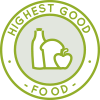
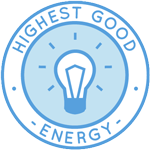
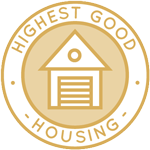
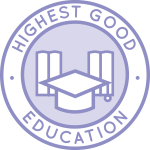


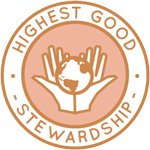
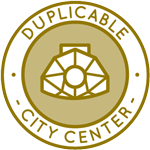
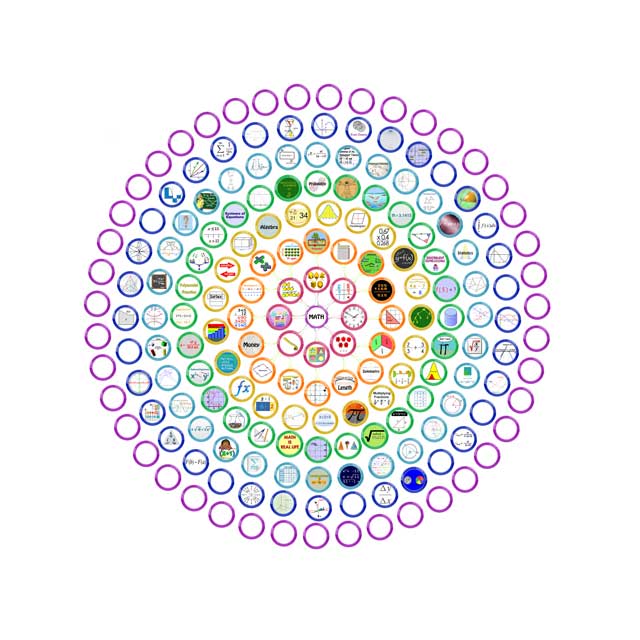
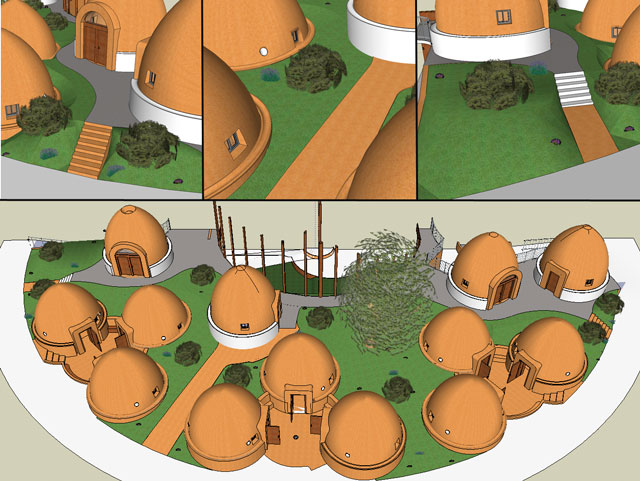
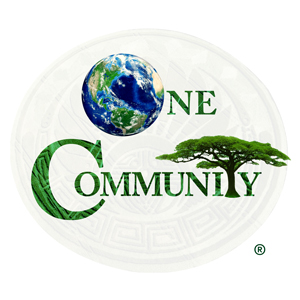


Connect with One Community